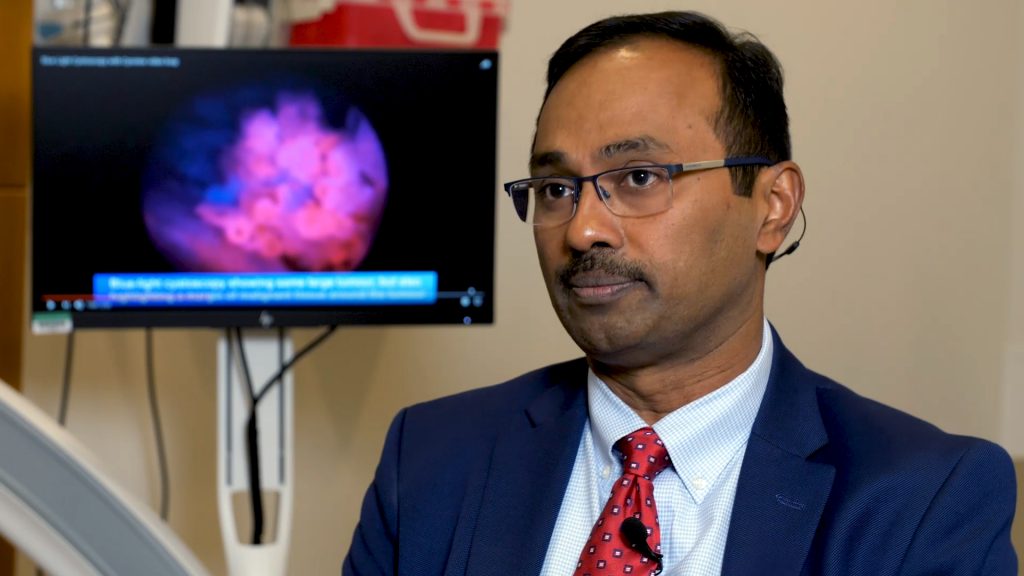April 3, 2020 by John Fernandez
Early Detection of Bladder Cancer Gets Boost From Flexible Blue Light Cystoscopy

Flexible blue light cystoscopy, a new diagnostic technology available exclusively in South Florida at Miami Cancer Institute, is aiding in the early detection of cancer of the bladder. Bladder cancer is the fourth most common cancer in men but one that also affects women, according to Murugesan Manoharan, M.D., Chief of Urologic Oncological Surgery at the Institute.
(Watch now: The Baptist Health News Team speaks with Muguresan Manoharan, M.D., Chief of Urologic Oncological Surgery at the Institute at Miami Cancer Institute, about using flexible blue light cystoscopy for early detection of bladder cancer. Video by George Carvalho.)

Each year, according to the American Cancer Society, roughly 80,000 new patients are diagnosed with bladder cancer, and around 17,500 patients die from the disease. More than 75 percent of those diagnosed are men, and 90 percent are over age 55. The average age at diagnosis is 73.
As with any type of cancer, early diagnosis can lead to improved outcomes and better survival rates. But the risk of recurrence makes regular follow-up exams a necessity for patients with bladder cancer. Roughly 75 to 80 percent of patients with high-grade bladder cancer will experience a relapse, says Dr. Manoharan. Left untreated, it can grow rapidly and metastasize through the wall of the bladder to other organs and lymph nodes, where it can turn deadly.
Flexible blue light cystoscopy is used at Miami Cancer Institute for both diagnosis and post-treatment monitoring because it offers benefits for both physicians and patients, according to Dr. Manoharan.
New technology means patients can drive home after procedure
“Normally, a bladder cystoscopy has to be performed in a hospital operating room, with the patient under anesthesia, making the procedure much more involved,” Dr. Manoharan says. “With flexible blue light cystoscopy, the procedure can be performed far more quickly. It’s done in an outpatient setting, using local anesthetic, so patients experience minimal discomfort and they can drive themselves home afterwards and return to their normal activities right away.”

Patient convenience aside, the primary advantage of blue light cystoscopy is its remarkable ability to aid in the detection of bladder cancer.
“Cancers of the bladder can be extremely difficult to see using a standard white light cystoscope – tumors may be missed in up to 25 percent of cases,” says Dr. Manoharan. “With blue light cystoscopy, we introduce an optical imaging agent (Cysview® Hexaminolevulinate HCI), into the bladder and if there is a tumor there, it will light up bright pink under the blue light, making it much easier to detect.”
According to Dr. Manoharan, Miami Cancer Institute is currently one of the few cancer centers in Florida – and in the country – using the flexible blue light cystoscopy technology.
top stories












There are no comments